Lake Bluff’s One-of-a-Kinda Washington Park
By Michael Stephenson
In the early 1990s, the Lake Bluff Garden Club discovered a neglected lot on the corner of Sheridan Road and Washington Avenue. The property had one redeeming feature: a stately 200-year-old bur oak tree, which inspired the club to restore the lot. Volunteers pulled weeds, discarded litter, and planted three crabapple trees. The village dedicated Washington Park in 1995, just in time for Lake Bluff’s 100th anniversary.
Since then, garden club members have mulched, planted, watered and weeded the lawn and flowerbeds annually.
“Washington Park has been a place for members to gather for a friendly chat while pulling weeds or edging a bed,” said Peggy Pezza, the club’s civics chairperson.
Sadly, in 2018, the Washington Park bur oak died. The garden club decided to use the wood to make a table and benches for the park. John Palenske, landscape project manager at Kinnucan Tree Experts and Landscape Company, heard about the idea. Two months later, Palenske told club members that in honor of Lake Bluff’s 125th anniversary, Kinnucan would restore Washington Park and maintain the site for one year, at no cost, a $65,000 donation.
Palenske recruited Deirdre Toner, DT Design, LLC, to plan the new garden, and he invited Mike Jarvi, master woodcrafter from Crab Tree Farm, to design and build the table and benches using wood harvested from the bur oak. The tree removal, table and benches, new sprinkler system and plant name signage was donated by a Lake Bluff family to foster the love of the nature and gardening in Lake Bluff.
It was a “true Lake Bluff community effort,” said Marietta Hance, special projects chairperson for the Lake Bluff Garden Club.
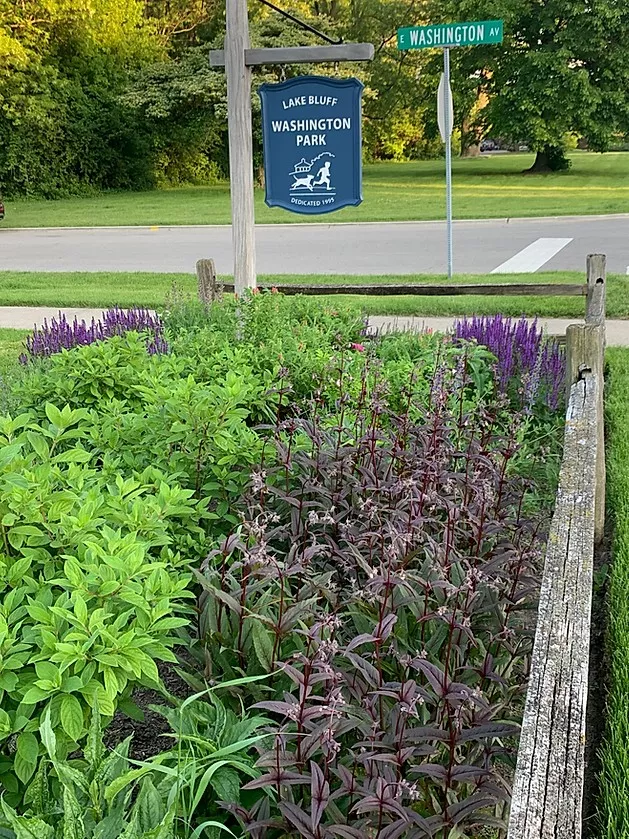

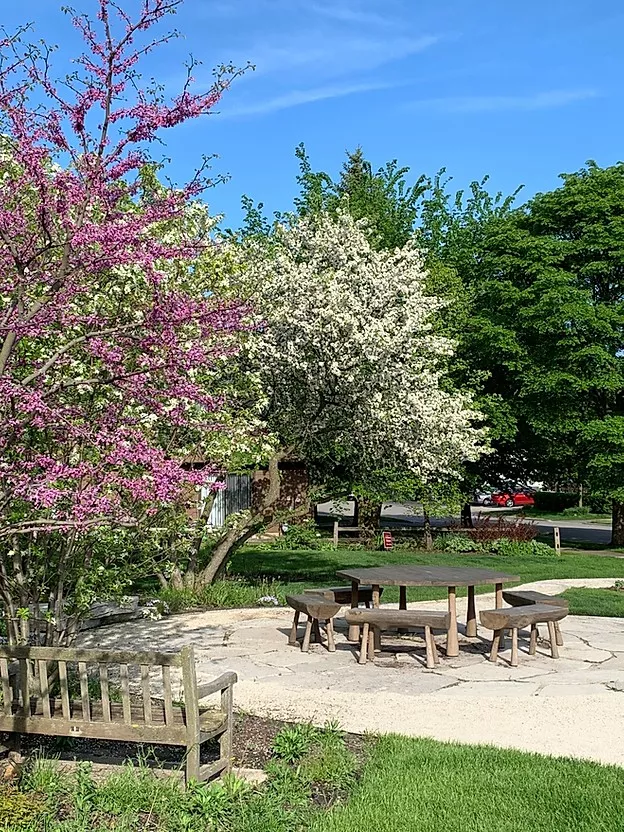
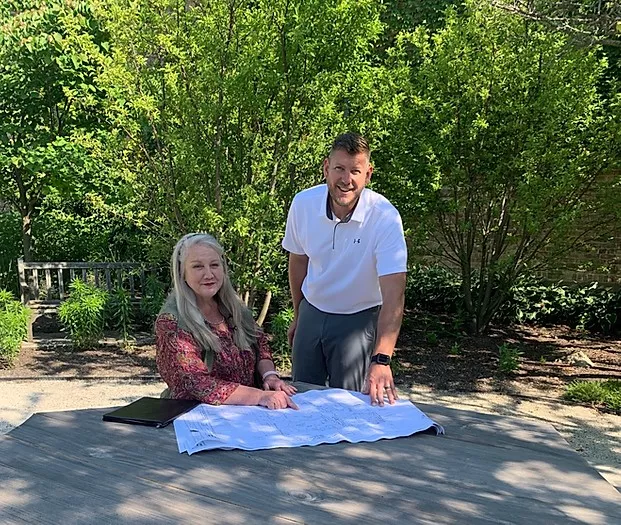
Instrumental in reviving the park were Deirdre Toner, DT Design, LLC, and John Palenske, Kinnucan Tree Experts and Landscape Company.
With garden club member input, Toner focused on themes of sustainability and community learning. Visitors can explore the garden following a path under the 25-year-old crabapple trees, passing hour-glass shaped beds filled with more than 60 species of primarily native plants, each with a story to tell. For example:
- Indian Pinks (Spigelia marilandica) attract hummingbirds
- Bowman’s Root (Gillenia trifoliata) was used by Native Americans to treat respiratory conditions, stomach disorders, bee stings and bug bites
- Bladdernut (Staphylea trifolia) provides protective cover for birds
- Palm Sedge (Carex muskigumensis) has triangular stems
- Lavender Hyssop (Agastache x Blue Fortune) leaves and flowers make a tasty tea
As Lake Bluff’s only “teaching garden,” Washington Park’s design sets the stage for visitors to observe and learn about sustainable perennial gardening.
If you’re looking to gather with family and friends, the gray hexagonal table in the center of Washington Park is the perfect spot to socialize. To honor the bur oak tree’s symbolic importance to Washington Park, Jarvi carved a Celtic Spirit of the Tree on one of the tables’ legs.
“Kids will enjoy the carving,” Jarvi said.
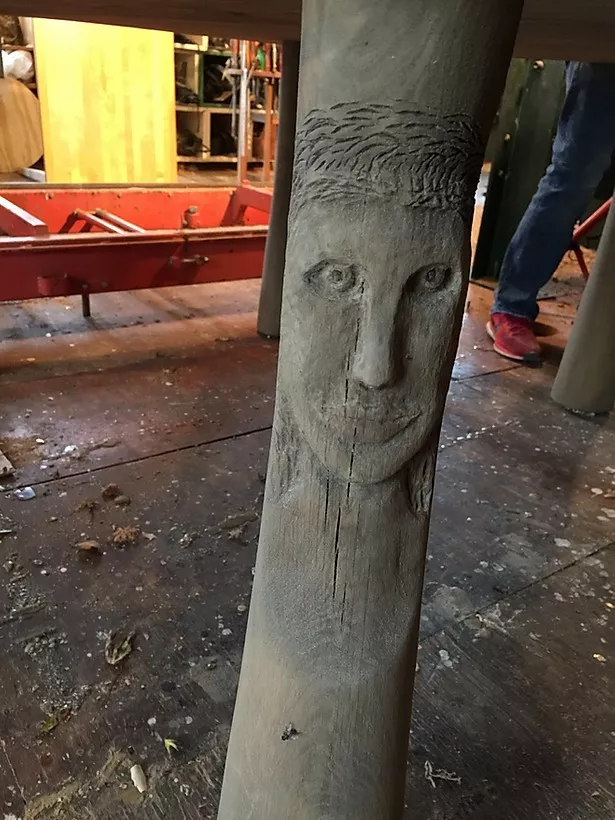
The Celtic Spirit carved into the table leg is just one of Washington Park’s many charms
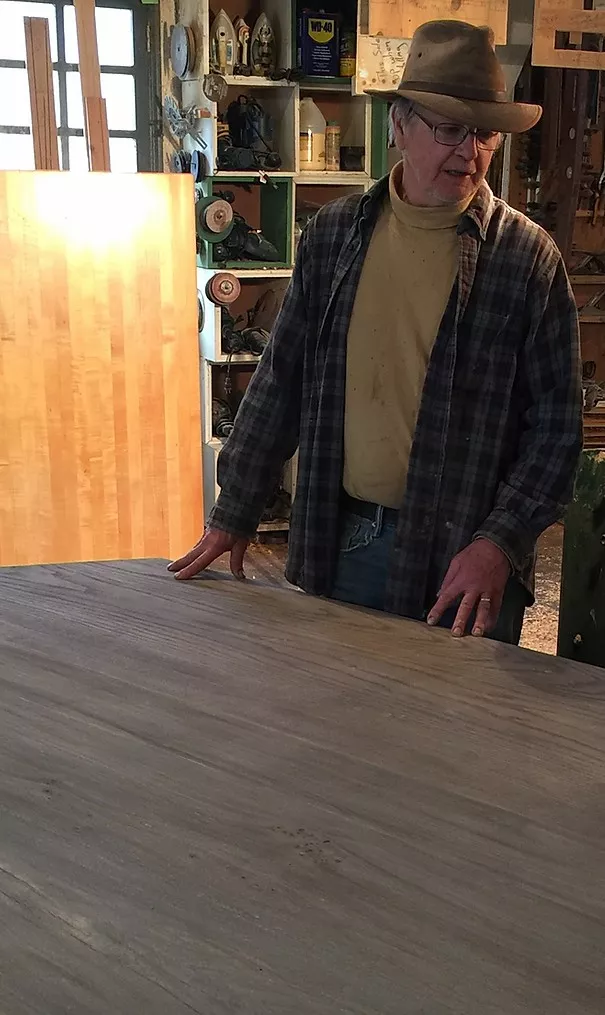
Mike Jarvi built the bur oak table in the workshop at Crab Tree Farm in Lake Bluff
All of the paths at Washington Park meet ADA-approved standards. There is an open space at the table for wheelchair accessibility. Future improvements are planned, including a water fountain with a drink well for dogs.
The Washington Park rededication ceremony is planned for 2021 to coincide with Lake Bluff’s 125th Anniversary celebrations, which were rescheduled from this year due to the COVID-19 pandemic.
Until then, plan a visit to Washington Park. It is a storied spot with a unique history.
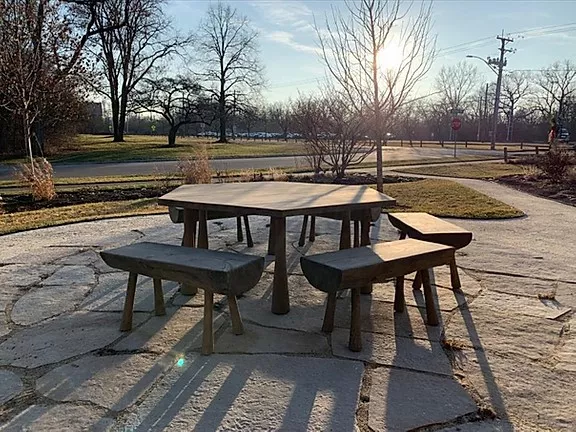
Washington Park is at the corner of Washington Avenue and Sheridan Road, Lake Bluff.
